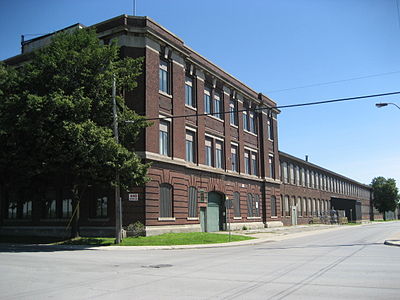Are you interested in learning about the company Studebaker? Do you want to know the specifics about the Canadian Studebaker factory? Read our guide for more facts and information…
Studebaker began as an American based manufacturing company that was originally in the business of producing wagons and other early modes of transportation. With the advancement of modern technology, however, in 1902 Studebaker started producing their first automobiles. Studebaker brought the first modern automobile factory to Canada when the factory in Hamilton, Ontario was established. The Canadian Studebaker factory was built on a piece of land covering 20 acres on Victoria Avenue north just off of Burlington Street. Studebaker established the factory in Hamilton in part because of the city’s strong steel industry at the time.
The Canadian Studebaker factory was successful for a considerable period of time as at times the plant ran two shifts to raise production and meet quotas. In 1950 the factory enjoyed the best year of production that it would experience. The Canadian Studebaker factory was a modern and up-to-date factory that during peak production was responsible for sales, parts, and manufacturing. Studebaker marketed their products to Canadians as Canada’s own car due to the location of the factory, while in the American market it was instead pitched as the common sense car. Studebaker was also a well respected and liked company by the its’ employees as not only was the company the 10th largest employer in Hamilton but it also was considered family oriented with the organization of employee parties and day trips.
Production
The Canadian Studebaker factory focused on producing the Daytona, Cruiser, Commander, and Wagonaire models of cars as well as a few other select models. The Canadian Studebaker factory manufactured cars as a satellite factory as engines were imported from the United States. In late December of 1963, however, the American Studebaker plants were closed. The closure of the American plants lead to a shift in production as smaller engines were used as the engines were now produced in St. Catherine’s, Ontario. In addition to the change in engine, the Canadian Studebaker factory was now the primary manufacturing location of the company. Studebaker believed, that the Canadian factory in Hamilton could remain profitable with the production of 20 000 units per year; however, the company soon began to encounter difficulties.
The End of the Line
The Canadian Studebaker factory opened its’ doors in Hamilton in August of 1948 after gaining experience in the United States; although, the American plants would be the first Studebaker factories to close the Canadian factory was not able to sustain itself long after the American closures. Studebaker tried to sustain production through merging with Packard in an effort to minimize financial losses however this action in 1954 only succeeded in delaying the inevitable closure. In 1966 the last Studebaker car was manufactured, which was not only the end of the Canadian Studebaker factory but also of the entire company. The closure of the Canadian Studebaker factory was a strong blow to the city of Hamilton as at the time of the closure the company employed 700 workers and was the 10th largest employer in the city.





